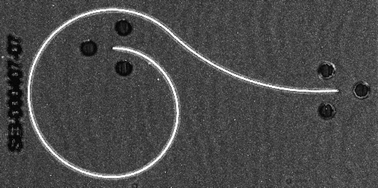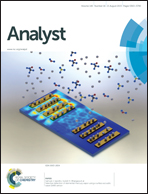An integrated ceramic, micro-fluidic device for the LC/MS/MS analysis of pharmaceuticals in plasma†
Abstract
An integrated capillary scale (300 μm id) ceramic microfluidic LC system combined with MS/MS has been successfully employed for the quantitative analysis of pharmaceutical compounds in human plasma. The capillary ceramic microfluidic LC/MS/MS system showed an approximate 20-fold (range 11–38-fold) increase in sensitivity compared with a standard 2.1 mm scale UPLC/MS/MS system for a broad range of analytes. The loading capacity of the devices capillary separations channel allowed injection of 2 μL of an aqueous solution, and up to 1.2 μL of a typical protein-precipitated plasma sample, onto the reversed-phase chromatography system. The system also showed excellent chromatographic performance and robustness, with no deleterious effects on the chromatography observed over the course of 1000 injections of protein-precipitated plasma. The ability of the ceramic microfluidic LC/MS/MS system to deliver this level of sensitivity and performance enables the routine quantification of pharmaceutical compounds from small format samples, such as those obtained by dried blood spot or other blood microsampling approaches, to be performed.

- This article is part of the themed collection: Analytical Sciences in the UK

 Please wait while we load your content...
Please wait while we load your content...